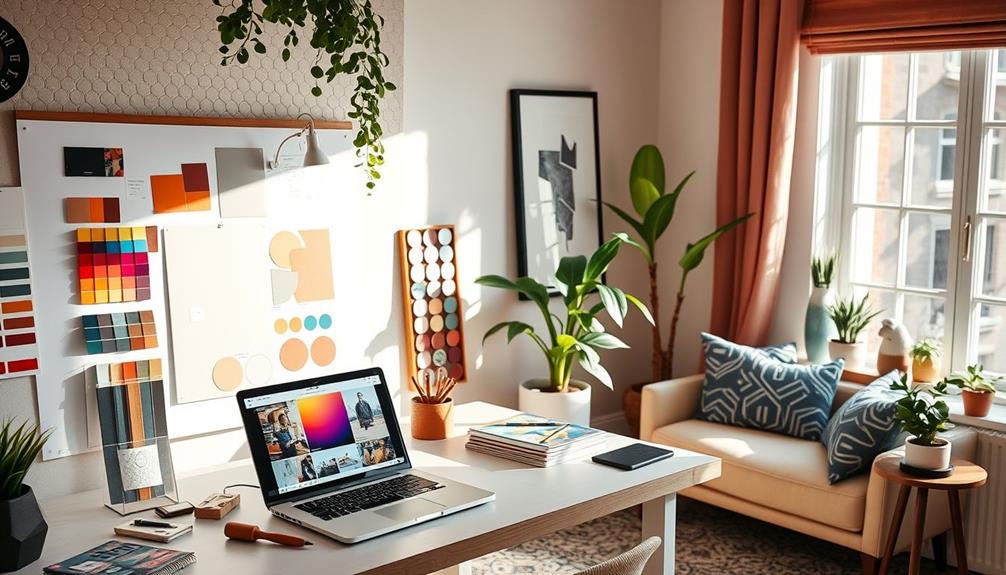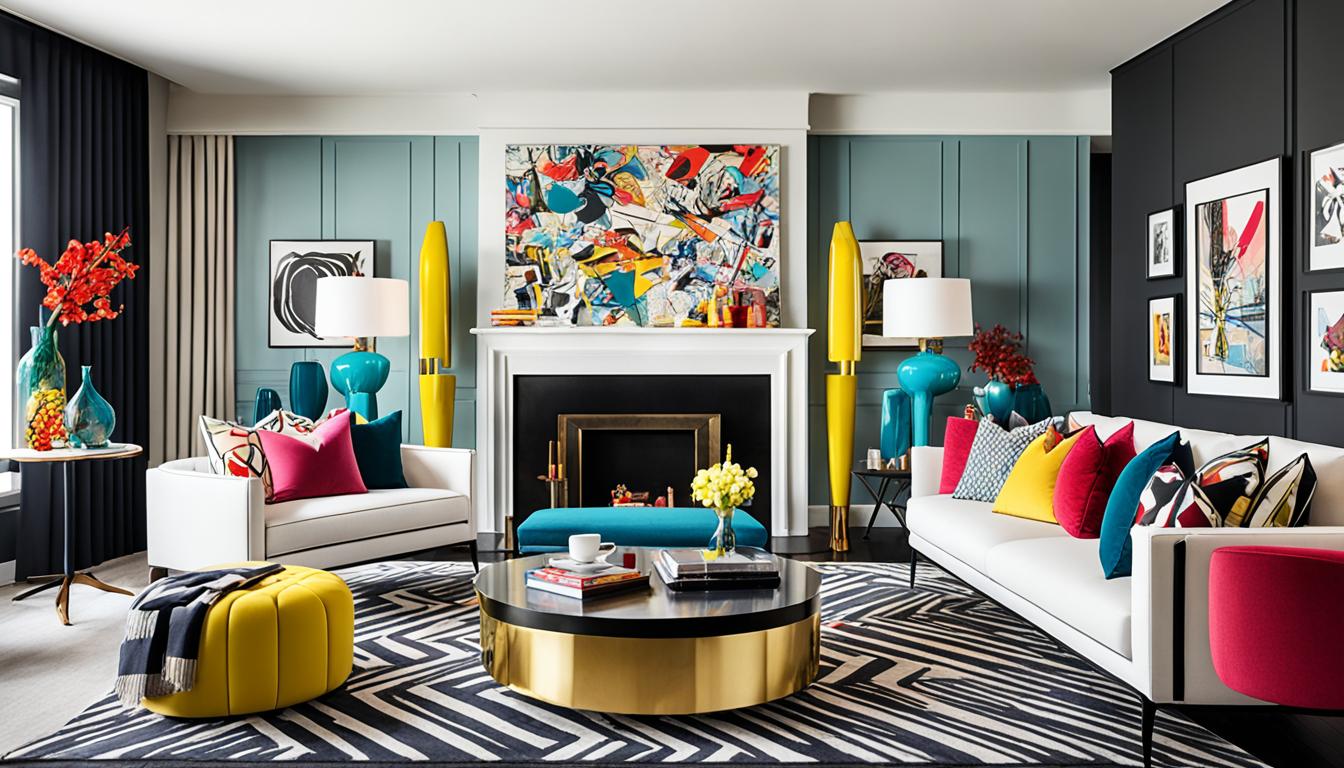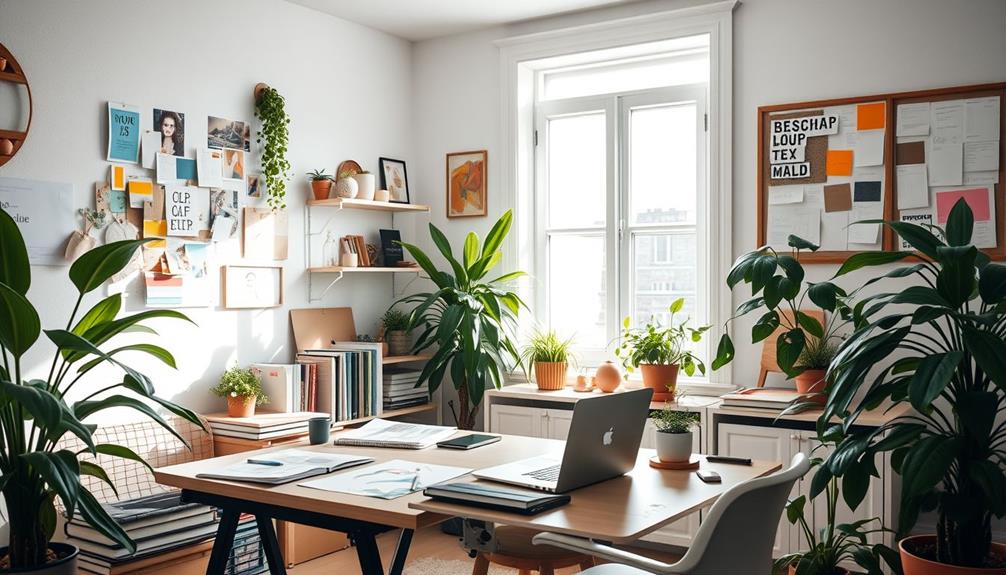To organize your interior design office's sample library, start by categorizing materials like fabrics, finishes, and textures using a hierarchical system. Label everything consistently for quick identification and record product specifications. Implement stash bins for project materials and schedule regular inventory checks to remove outdated samples. Create a digital tracking system for easy access. Regularly clean and revitalize your samples to maintain quality. This organized approach enhances collaboration and boosts creativity, making it easier to select the right materials for projects. If you want to explore more tips on maintaining an efficient sample library, keep going! For additional interior design organization tips, consider investing in a software program specifically designed for managing sample libraries. This can streamline the process even further by allowing you to easily search and filter through your materials. Another helpful tip is to create a designated area within your office for client presentations, complete with a curated selection of your best samples. This can impress clients and streamline the decision-making process. By following these interior design organization tips, you can create a more efficient and visually appealing workspace.
Key Takeaways
- Implement a hierarchical organization system by categorizing materials into types, such as fabrics, finishes, and textures for easy access.
- Use a consistent labeling system that includes material names and prices to facilitate quick identification and selection.
- Regularly update the inventory by removing outdated samples and re-filing materials to maintain an organized and current library.
- Create digital databases for tracking inventory and accessing product specifications, enhancing efficiency in material selection.
- Schedule regular reviews to clean, revitalize samples, and incorporate team input on potential updates for improved collaboration.
Importance of a Materials Library

A well-organized materials library is essential for any design team. It centralizes design resources, allowing you and your fellow interior designers to easily access a variety of materials. This accessibility enhances efficiency in project development, helping you make informed decisions based on project needs and client preferences. When your materials library is organized, you can quickly select the most suitable options, saving valuable time.
Moreover, a well-maintained library facilitates collaboration among design teams. Everyone can contribute and access the same resources, ensuring consistency across projects. This consistency not only strengthens your design proposals but also builds trust with your clients.
Regularly updating your materials library keeps you current with industry trends and innovations, allowing for more creative and relevant design solutions. Ultimately, an organized materials library considerably reduces the time spent searching for materials. This improvement directly impacts your project timelines and enhances the quality of client presentations.
Essential Components of Sample Libraries
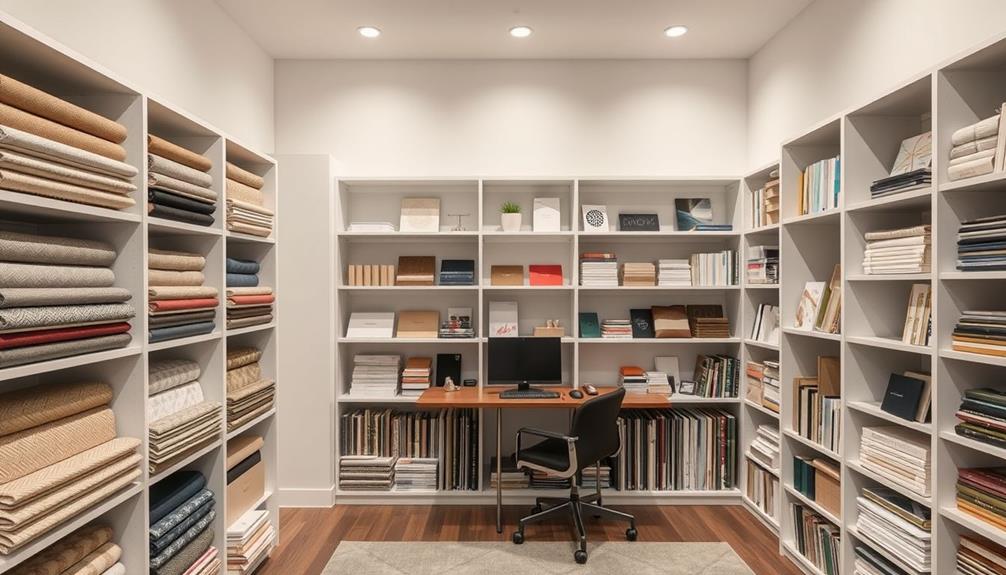
To maximize the benefits of a well-organized materials library, incorporating key components is essential.
A thoughtfully curated sample library can streamline your interior design project, making the selection process more efficient and enjoyable.
Here are some crucial elements to include:
- A diverse range of materials like fabrics, finishes, and textures
- Product specifications and technical data sheets for informed decision-making
- Digital databases for quick access and easy inventory tracking
- Reference guides on sustainable materials and sourcing options
Organization and Cataloging Techniques

When organizing a sample library, effective cataloging techniques are key to enhancing accessibility and efficiency. Start by implementing the golden rule: label and price all materials before entering the library. This prevents obsolescence and boosts selection efficiency.
Next, adopt a hierarchical organization system that categorizes your samples not just by color or size, but by material type—such as textiles, wood, and metal. You can even create subcategories within each type to streamline the selection process.
Utilize a consistent labeling system that allows for easy identification and retrieval of materials. This consistency is vital for maintaining workflow during project execution.
Regularly updating your inventory is also essential; remove outdated samples to keep your materials library relevant and efficient for design projects.
Material Management Systems

In today's fast-paced design environment, effective material management systems are essential for maintaining an organized and efficient sample library. By implementing a stash bin system, you can efficiently set aside unused materials during busy project periods, guaranteeing your workflow remains uninterrupted.
Combine this with project trays and bins to keep your materials organized and protected from damage.
To truly enhance your material management, consider the following:
- Regularly re-file samples from stash bins to keep your inventory updated.
- Collect samples from clients for return to maintain a streamlined library.
- Create a digital tracking system for quick searches and enhanced accessibility.
- Schedule regular reviews to identify and remove outdated items.
These strategies not only help you organize your sample books but also ensure your library evolves with your design needs.
By maintaining a current inventory and establishing processes for organization, you'll create a sample library that's not just functional but also a source of inspiration.
Maintenance and Quality Control

Maintaining an organized sample library requires regular attention to confirm its quality and relevance. Schedule regular reviews of materials and samples to identify outdated or damaged items. This way, you guarantee the library remains appealing to clients and reflects current trends in interior design.
Cleaning and revitalizing samples periodically is essential for maintaining their presentation. This enhances the overall professionalism of your materials library, making it a go-to resource for designers.
Encourage team input on new additions or removals to foster collaboration. This keeps your library aligned with the latest design needs and trends.
Additionally, monitor industry trends in materials to update the library accordingly. This allows designers to offer clients cutting-edge options and informed recommendations.
Establish clear guidelines for the proper handling and storage of samples. These protocols help prevent damage and extend the life of materials in the library.
Benefits of an Organized Library
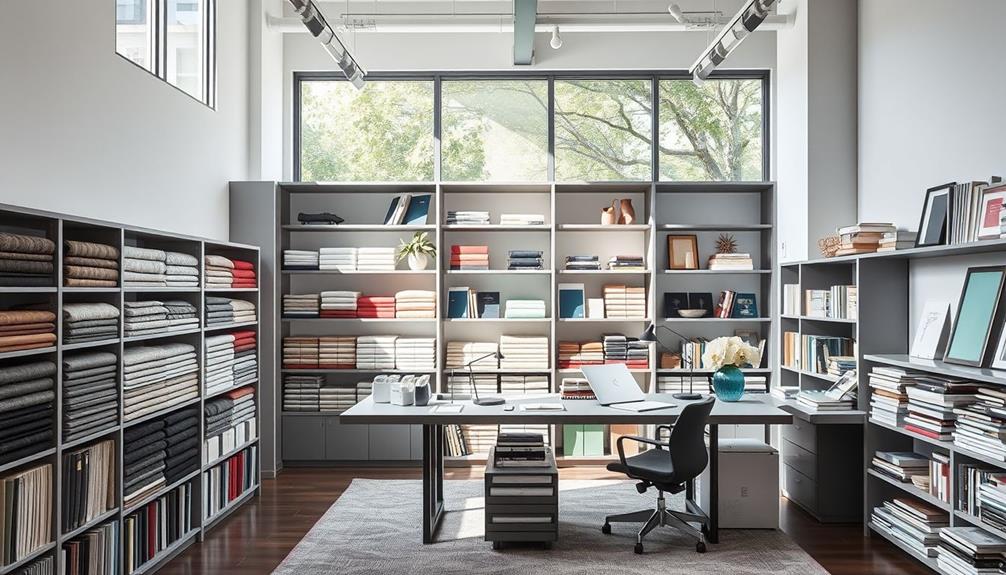
Organization is key to maximizing the efficiency of your sample library. When your samples are organized, you spend less time searching for materials and more time focusing on creative processes and client interactions.
This streamlined workflow not only supports project timelines but also boosts client satisfaction, as you're able to present cohesive and easily accessible samples.
Here are some emotional benefits of an organized library:
- Enhanced creativity: A well-organized space allows you to experiment with diverse options.
- Improved accuracy: Proper organization minimizes costly mistakes in material selection and ordering.
- Increased project approvals: High-quality presentations lead to more successful client interactions.
- Reduced stress: Knowing where everything is helps you feel more in control and confident.
Professional Development and Resources
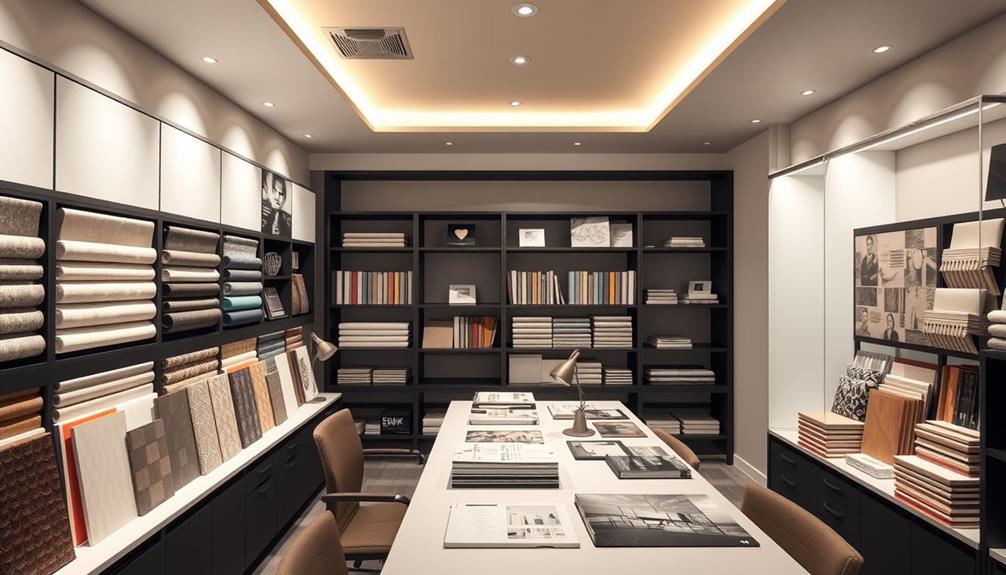
Professional development is essential for interior designers looking to stay ahead in a competitive industry. Engaging with industry blogs and attending webinars can give you valuable insights into sustainable practices and effective subcontracting strategies. These resources not only enhance your knowledge but also help you serve your ideal clients better.
Additionally, fostering curiosity in problem-solving can lead to innovative design solutions that set you apart from the competition. Joining networks like The Weekly Install™ is another great way to access business advice and connect with industry experts. This ongoing professional development can open doors to new opportunities.
Participating in workshops can also sharpen your design skills, keeping you updated on the latest trends and best practices in the interior design business. Moreover, seeking mentorship from experienced designers fosters growth and encourages collaboration. Learning from others can accelerate your professional journey and enhance your network.
Ultimately, don't overlook practical resources like downloadable templates for project management and client communication. These tools can streamline your operations, improve efficiency, and ultimately lead to better client satisfaction. By prioritizing professional development and utilizing available resources, you'll position yourself as a competitive force in the interior design industry.
Conclusion
In the world of design, your materials library is like a treasure chest waiting to be revealed. By organizing and managing your samples effectively, you not only streamline your workflow but also ignite your creativity, much like the spark that lit the Renaissance. Embrace the benefits of a well-structured library, and watch as it transforms your projects from ordinary to extraordinary. So, immerse yourself, and let your organized collection inspire your next masterpiece!



